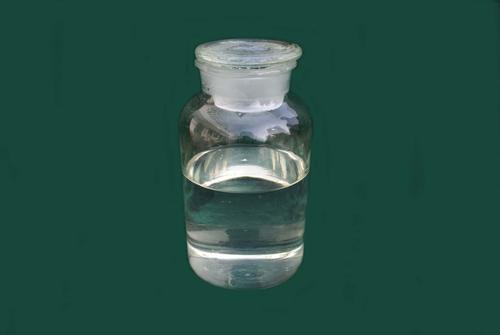(1) Citrate ester Commonly used citrate ester plasticizers, there are two main varieties: tributyl citrate, acetyl tributyl citrate
Tributyl citrate is produced by the direct esterification of citric acid and butanol. Acetyl tributyl citrate can be obtained by reacting tributyl citrate with ester acid. Both are colorless and transparent oily liquids, non-toxic and mildew-proof. Can be used for food packaging materials. Often used in polyvinyl chloride and various fiber resins.
(2) Benzene Polyester Due to the development of petrochemical industry, polytoluene raw materials are provided. Environmentally friendly plasticizers oxidize them to obtain Benzene Polyester, and then Dehydration gives acid anhydride. Benzene polyesters can be obtained by esterifying benzene polyacids and their anhydrides with alcohols.
If R=C8H17, it is tri-n-octyl trimellitate (TOTM), and if R=C10H21, it is tri-n-decyl trimellitate.
They are colorless to light yellow viscous oily liquids with excellent heat resistance and durability, as well as good compatibility and low temperature resistance. Outstanding electrical insulation properties. It has attracted much attention in recent years.
(3) Pentaerythritol ester generally has the following two types:

The ether type is formed by the esterification of dipentaerythritol and C5~C7 fatty acids under the catalytic action of sulfuric acid. The ester type is formed by esterifying pentaerythritol, adipic acid, and fatty acids under the catalysis of sulfuric acid. Both are light yellow viscous oily liquids. Commonly used in polyvinyl chloride, it is a plasticizer that is heat-resistant, aging-resistant and exfoliation-resistant. It has low volatility and good electrical properties, but poor low temperature resistance.
(4) Amide plasticizers Representative varieties of this type of plasticizers such as dibutyl oleamide (DBO), regarding the properties of various plasticizers See table with usage.
1. Overview of the production of plasticizers
Due to the large amount of plasticizers and the wide variety of plasticizers, the current plasticizer production technology tends to develop in two aspects: on the one hand, the main plasticizer Continuous large-scale production. For example, the consumption of phthalate plasticizers accounts for about 80% of the entire plasticizers, and the production volume is very large. Therefore, new plasticizers have appeared, such as dioctyl phthalate. Continuous large-scale production in the center. At present, it generally reaches the level of single line production capacity of 20,000 to 50,000 t/a. The production capacity of BASF’s DOP continuous production equipment has reached 100,000 t/s. The biggest advantage of large-scale continuous production is economy.
On the other hand, since there are many varieties of plasticizers, and the production volume of one variety is often small, in order to adapt to the production of multiple varieties of other plasticizers in small batches In production, general equipment is often used for intermittent production. The so-called “universal” production device, a production device of Reichold Chemical Inc. in the United States is a typical example of this kind of “universal” production device. The device can handle more than 60 kinds of raw materials at ordinary times. It has 13 raw material storage tanks with separate pipes and 24 finished product receiving tanks. The reactor has a volume of 18 square meters and a production capacity of 13,000 to 16,000 t/a. It also has auxiliary equipment corresponding to the reactor volume such as a neutralizer (10m³), a stiller (2X380m³), a scrubber, a filter and a stripping tower. Can produce phthalate, adipate, azelaate, sebacate, US
There are about 30 to 40 kinds of maleates, fumarates, trimellitates, epoxy compounds, polyesters and other plasticizers. , equivalent to 95% of commonly used plasticizer varieties in the United States.



 微信扫一扫打赏
微信扫一扫打赏
